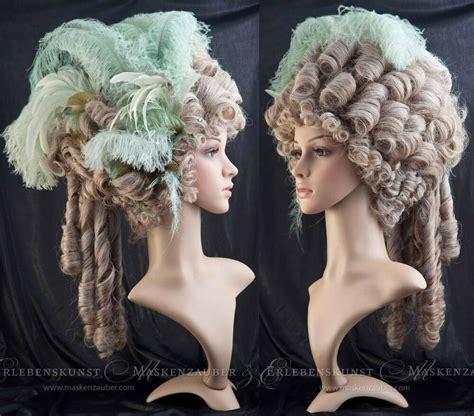Introduction
French powder wigs were an iconic fashion statement in the 18th century. These elaborate wigs were worn by both men and women and were a symbol of wealth, status, and power. In this article, we will take a closer look at the history of French powder wigs, their construction, and their cultural significance.

History of French Powder Wigs
The origins of French powder wigs can be traced back to the early 17th century. At this time, wigs were worn as a way to cover up baldness or to protect the head from the sun and cold. However, it was not until the reign of Louis XIV that wigs became a fashion statement.
Louis XIV was a great lover of fashion and extravagance. He set the trend for wearing large, elaborate wigs that were powdered white. The white powder was made from a variety of substances, including flour, starch, and chalk. It was applied to the wig with a brush or a puff and helped to create a voluminous and dramatic look.
Construction of French Powder Wigs
French powder wigs were made from a variety of materials, including human hair, horsehair, and wool. The wigs were constructed on a wire frame that was fitted to the wearer’s head. The hair was then sewn onto the frame, one strand at a time.
The process of making a French powder wig was time-consuming and expensive. A single wig could take several weeks to complete and could cost up to 100 pounds sterling. As a result, only the wealthy could afford to wear these elaborate wigs.
Cultural Significance of French Powder Wigs
French powder wigs were more than just a fashion statement. They were also a symbol of social status and power. The size and elaborateness of a wig indicated the wearer’s rank and wealth. For example, the larger and more elaborate the wig, the higher the wearer’s social status.
French powder wigs were also used to make a political statement. During the French Revolution, revolutionaries wore wigs that were smaller and less elaborate than those worn by the aristocracy. This was a way to show their rejection of the old regime and their support for the new republic.
The Decline of French Powder Wigs
French powder wigs began to decline in popularity in the late 18th century. This was due in part to the rise of new fashion trends, such as the wearing of natural hair. Additionally, the French Revolution led to a general rejection of the old regime and its symbols, including French powder wigs.
By the early 19th century, French powder wigs had largely disappeared from fashion. However, they continue to be worn today by some traditionalists and reenactors.
Conclusion
French powder wigs were an iconic fashion statement in the 18th century. These elaborate wigs were worn by both men and women and were a symbol of wealth, status, and power. Today, French powder wigs are still worn by some traditionalists and reenactors, but they are no longer the fashion statement that they once were.
Tables
| Table 1: Timeline of French Powder Wigs |
|—|—|
| 1600s | Wigs are worn to cover up baldness or to protect the head from the sun and cold. |
| 1660s | Louis XIV sets the trend for wearing large, elaborate wigs that are powdered white. |
| 1700s | French powder wigs reach the height of their popularity. |
| 1780s | The French Revolution leads to a decline in the popularity of French powder wigs. |
| 1800s | French powder wigs are largely disappear from fashion. |
| Table 2: Materials Used in French Powder Wigs |
|—|—|
| Human hair | The most expensive and luxurious material used in French powder wigs. |
| Horsehair | A less expensive alternative to human hair. |
| Wool | The least expensive material used in French powder wigs. |
| Table 3: Social Significance of French Powder Wigs |
|—|—|
| The size and elaborateness of a wig indicated the wearer’s rank and wealth. |
| French powder wigs were also used to make a political statement. |
| During the French Revolution, revolutionaries wore wigs that were smaller and less elaborate than those worn by the aristocracy. |
| Table 4: Cultural Significance of French Powder Wigs |
|—|—|
| French powder wigs were an iconic fashion statement in the 18th century. |
| They were worn by both men and women. |
| French powder wigs were a symbol of wealth, status, and power. |
| Today, French powder wigs are still worn by some traditionalists and reenactors. |
